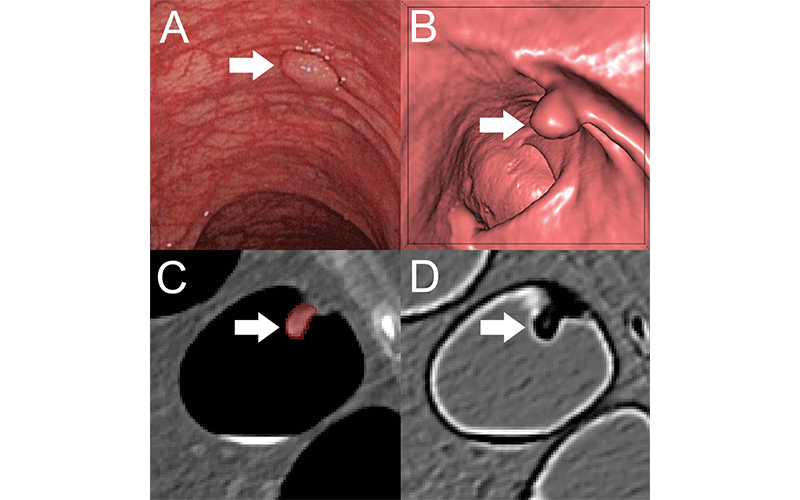Machine Learning Method Identifies Precancerous Colon Polyps
Findings offer a role for machine learning-derived algorithms to boost effectiveness of CT colonography

A machine learning (ML) algorithm helps accurately differentiate benign and premalignant colorectal polyps on CT colonography scans, according to a study in Radiology.
During the last two decades, CT colonography emerged as a noninvasive alternative to colonoscopy in screening for colorectal cancer. It is comparable to colonoscopy in detecting most polyps and is effective at visualizing portions of the colon that in cases of complex anatomical conditions cannot always be evaluated by colonoscopy. However, CT colonography does not enable a definite differentiation between benign and premalignant polyps, which is crucial for individual risk stratification and therapy guidance.
For the new study, researchers leveraged the power of radiomics to characterize polyps beyond what was apparent to the naked eye.
Study Shows That ML Could Be Used a Second Reader in CT Colonography Exams
The researchers developed a ML algorithm to predict the character of the individual polyps based on quantitative image features extracted through radiomics. They applied the noninvasive, radiomics-based ML method on CT colonography images from a group of asymptomatic patients at average risk of colorectal cancer. The algorithm was trained on a set of more than 100 colorectal polyps in 63 patients and then tested on a set of 77 polyps in 59 patients.
In the test set, the ML approach enabled noninvasive differentiation of benign and premalignant CT colonography-detected colorectal polyps, with a sensitivity of 82%, and specificity of 85%. The area under the curve (AUC) was excellent.
“These results serve as proof-of-concept that machine learning-based image analysis allows the noninvasive differentiation of benign and premalignant colorectal polyps in CT colonography data sets,” said study lead author Sergio Grosu, MD, radiologist from University Hospital, Ludwig Maximilian University of Munich, in Munich, Germany. “The AUC of 0.91 indicates that this method works well.”
The findings point to a role for ML-derived algorithms in boosting the effectiveness of CT colonography as a screening tool for colorectal cancer.
“Adding machine learning-assisted image analysis to conventional, radiological image reading could further improve the clinical significance of CT colonography-based colorectal cancer screening by allowing for a more precise selection of patients eligible for subsequent polypectomy,” Dr. Grosu said. “This method could be used routinely as a second reader in all CT colonography examinations in the distant future.”
Dr. Grosu said that additional studies with larger numbers of patients are needed to validate the findings. He added that these studies should also help drive improvements in the ML algorithm.
“Further refinement of the machine learning-based image analysis is necessary to achieve higher precision in polyp differentiation as well as workflow optimization for better applicability in clinical routine,” Dr. Grosu said.
For More Information
Access the Radiology study, “Machine Learning-based Differentiation of Benign and Premalignant Colorectal Polyps Detected with CT Colonography in an Asymptomatic Screening Population – A Proof-of-Concept Study.”
Read previous RSNA News stories about machine learning:
- Data Science Pathway Prepares Radiology Residents for Machine Learning
- Ensembling Improves Machine Learning Model Performance
- In Fourth Year, RSNA AI Challenge Propels Winners to Greater Heights
